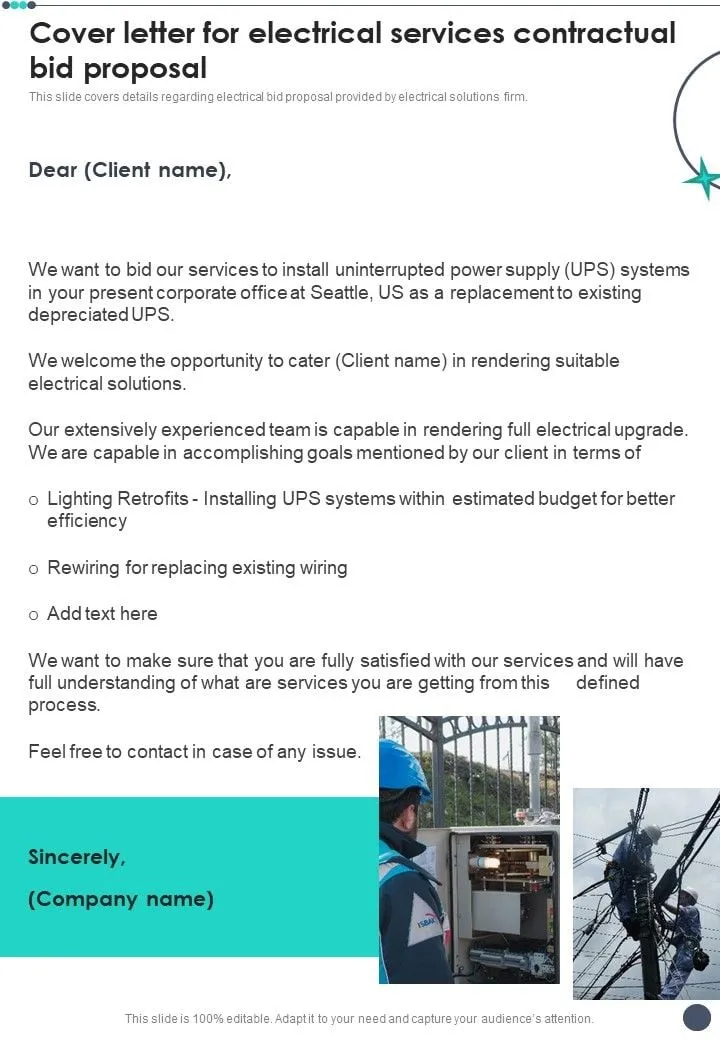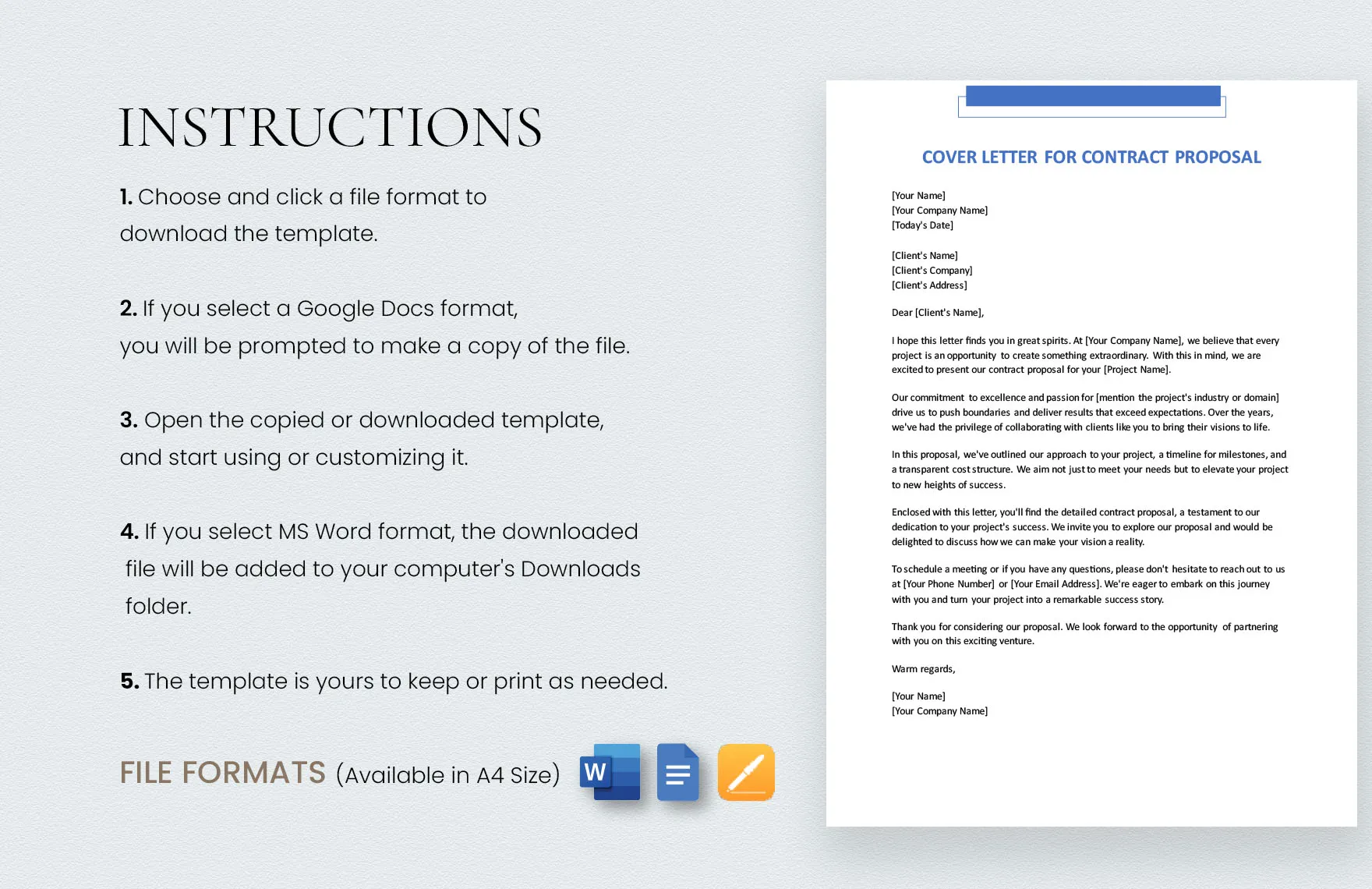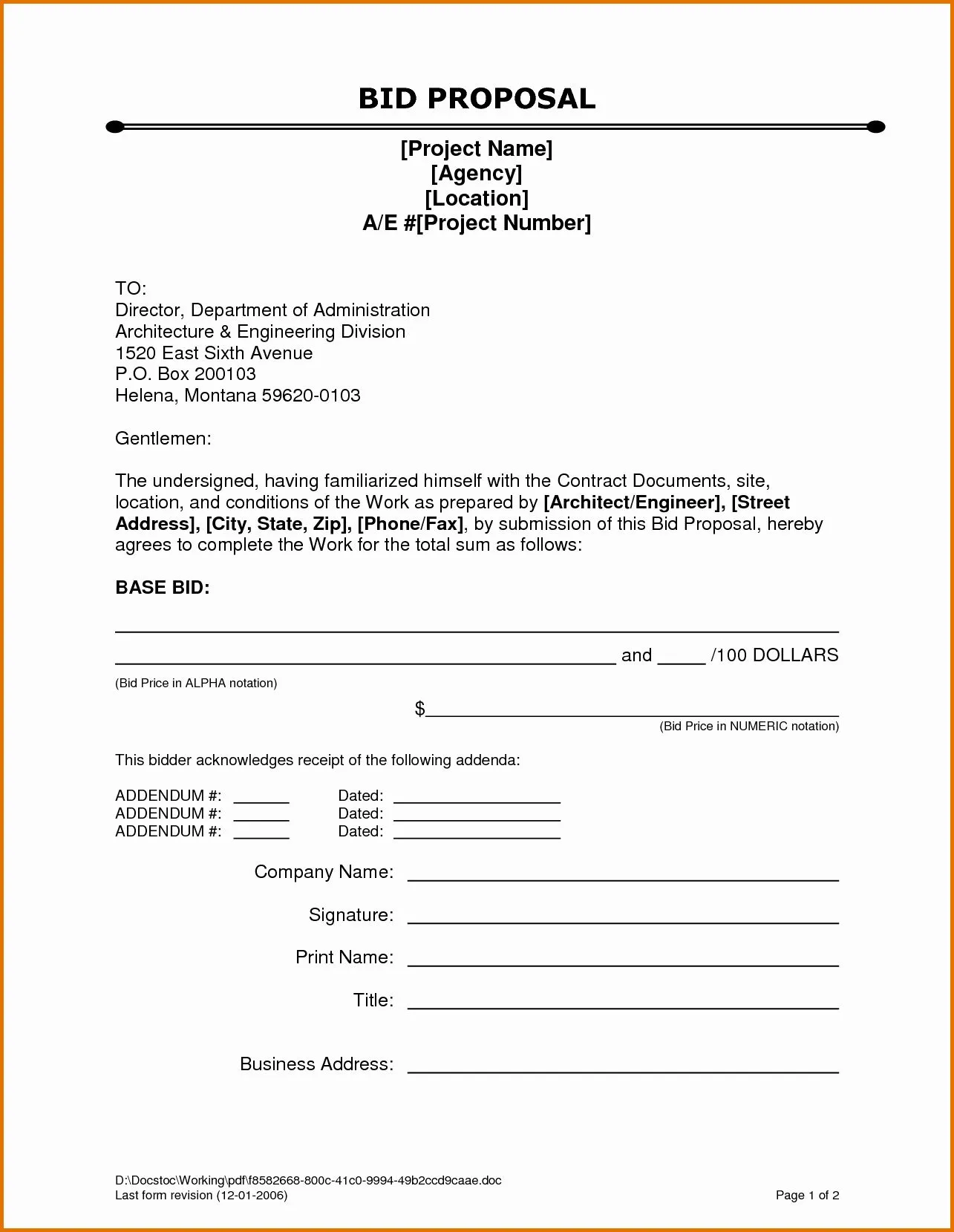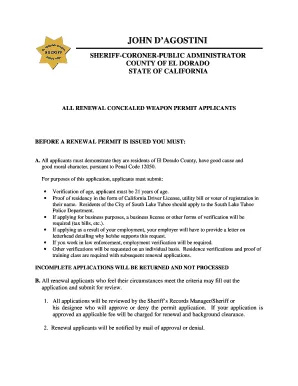What is a Construction Bid Proposal Cover Letter?
A construction bid proposal cover letter is a concise and professional document that accompanies a construction bid proposal. It serves as an introduction to your company and the proposed project, providing a snapshot of your understanding, qualifications, and pricing. This letter is the first impression you make on the client, so it’s essential to make it count. Think of it as your initial handshake, setting the tone for the entire proposal. A well-crafted cover letter increases the likelihood of your bid being considered seriously, demonstrating your attention to detail and commitment to the project. The goal is to highlight key aspects of your bid, encouraging the client to delve deeper into the full proposal.
Why a Cover Letter is Crucial for Construction Bids
In the competitive world of construction, a cover letter is not just a formality; it’s a necessity. It provides context to your bid, personalizing it and making it more engaging for the client. Without a cover letter, your proposal might get lost in a sea of other submissions. It allows you to reiterate the key benefits of choosing your company, emphasizing your understanding of the project and your commitment to delivering exceptional results. A well-written cover letter demonstrates professionalism, which is highly valued in the construction industry. It shows that you’ve taken the time to understand the project and are serious about winning the bid. By clearly communicating your value proposition, you increase your chances of being selected.
Key Components of an Effective Cover Letter

A compelling cover letter consists of several crucial components. Each element should be carefully crafted to ensure clarity, professionalism, and persuasiveness. Proper formatting, clear language, and a focus on the client’s needs are key. You need to showcase your understanding of the project, highlight your relevant experience, and provide a clear call to action. The goal is to guide the client through your proposal, making it easy for them to see why your company is the best choice for the job. Ensure that your cover letter complements the detailed information within your proposal document and reinforces your key selling points.
Company Information and Introduction
Start your cover letter by introducing your company. Include your company name, address, contact information, and a brief statement about your company’s mission or values. This sets a professional tone and lets the client know who you are. Briefly introduce yourself, stating your role in the company and your involvement in the project. A well-crafted introduction is essential for immediately establishing your credibility. Mention how you learned about the bidding opportunity, showing that you are proactive. Be sure to address the letter to the appropriate person, demonstrating that you have done your research and are showing respect for the client’s project.
Project Overview and Scope of Work
Provide a concise overview of the project, referencing the project name and location. This demonstrates your understanding of the project details. Briefly outline the scope of work your company will be performing. This should align with what is described in the proposal. Highlight any specific aspects of the project that you are particularly excited about or confident in your ability to deliver. Demonstrate that you’ve studied the project documents and understand the requirements. Keep the description brief, leaving the detailed information for the main proposal document. Make sure to use clear and concise language avoiding technical jargon unless necessary, ensuring the client can readily grasp your understanding of the project.
Highlighting Relevant Experience and Qualifications

Emphasize your company’s relevant experience, especially projects similar to the one you’re bidding on. Mention any specific skills, certifications, or licenses that are pertinent to the project. If you have a history of successful project completion, highlight your track record of delivering projects on time and within budget. Provide examples, where possible, of successful projects you have completed in the past. Briefly explain how your experience aligns with the project’s needs and requirements. Mention any awards or recognition your company has received, as this reinforces your credibility and commitment to excellence.
Showcasing Project Understanding and Approach
Demonstrate your thorough understanding of the project’s challenges and objectives. Outline your proposed approach to the project, highlighting key strategies and methodologies you plan to implement. Briefly explain how your approach will help achieve the client’s goals. Showcase your ability to find innovative solutions, if applicable. Mention how you intend to manage the project, emphasizing project management and communication strategies. This showcases your commitment to a smooth and efficient project execution. This section illustrates your commitment to delivering a successful project outcome and emphasizes your project management approach.
Detailing Pricing and Payment Terms
Clearly state the total bid price or provide a summary of the pricing structure. Ensure that the pricing is consistent with what is in your detailed proposal. Briefly outline your proposed payment terms, such as milestones and schedules. If there are any specific terms, such as discounts or guarantees, include them to enhance the appeal of your bid. Transparency in pricing and payment terms builds trust with the client. This helps avoid misunderstandings down the line. Making these terms easily understandable helps clients assess your bid quickly and efficiently.
Addressing Deadlines and Submission Requirements

Reiterate the deadline for submitting the bid proposal and confirm your ability to meet it. Confirm that all required documents and materials are included in your submission. Mention any specific submission instructions outlined by the client, such as format, delivery method, or contact person. Emphasize your commitment to adhering to all requirements. This section highlights your attention to detail and reliability. Double-check everything to confirm all the requirements have been met.
Including Supporting Documents and Attachments
List all supporting documents and attachments included with your proposal, such as company brochures, resumes of key personnel, insurance certificates, and references. Ensure that all attachments are properly labeled and organized for easy access. Refer to specific documents within your cover letter, such as a detailed cost breakdown or project schedule. This provides context and helps guide the client through your proposal. Make sure the supporting documents are relevant and enhance the value of your proposal.
Call to Action and Contact Information
End your letter with a clear call to action. Invite the client to review your proposal and contact you with any questions or to schedule a meeting. Include your contact information, such as phone number, email address, and the name of a point of contact. Thank the client for their time and consideration. Reiterate your enthusiasm for the project and your commitment to delivering exceptional results. Express your eagerness to collaborate with the client and build a long-term relationship. A strong call to action makes it easy for the client to respond.
Proofreading and Editing Your Cover Letter

Before submitting your cover letter, carefully proofread and edit it for any grammatical errors, spelling mistakes, and typos. Ensure that the formatting is consistent and professional. Have a colleague review your letter to catch any errors you might have missed. Confirm that the tone and language are appropriate for the construction industry. Ensure that your cover letter is concise, easy to read, and free of any jargon or overly technical language. A polished cover letter demonstrates your professionalism and commitment to detail. Pay attention to the overall presentation of your cover letter, including the use of headings, bullet points, and white space.
In conclusion, a construction bid proposal cover letter is a vital tool in the bidding process. It’s your opportunity to make a strong first impression, showcasing your company’s capabilities, experience, and commitment to the project. By including key components, such as company information, project overview, experience highlights, and a clear call to action, you increase your chances of winning the bid. Remember to proofread and edit your cover letter to ensure it is polished and professional. A well-crafted cover letter is the first step toward securing a successful construction project. Using this guide and the provided example, you can create a compelling cover letter that effectively represents your company and increases your chances of success.
